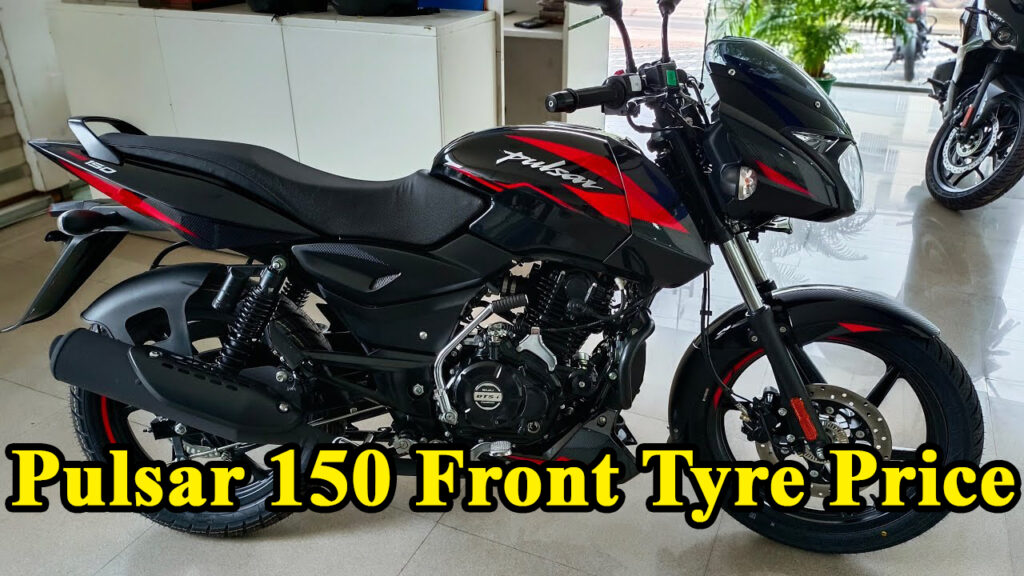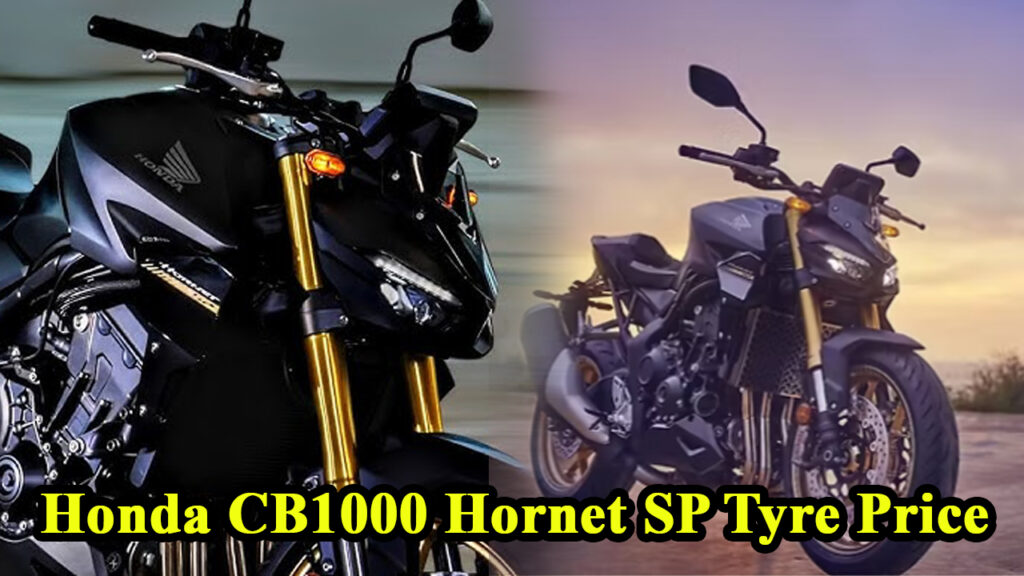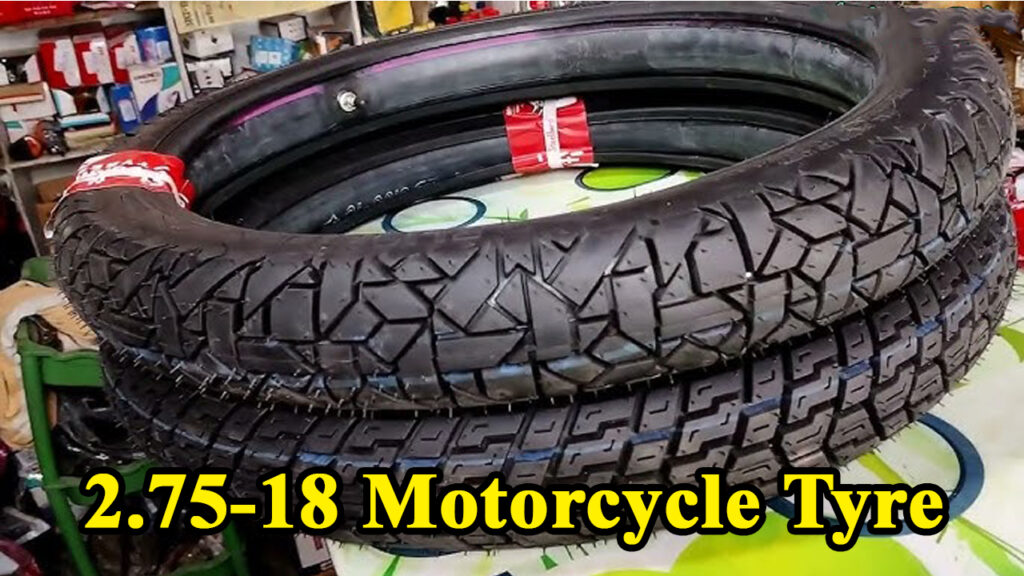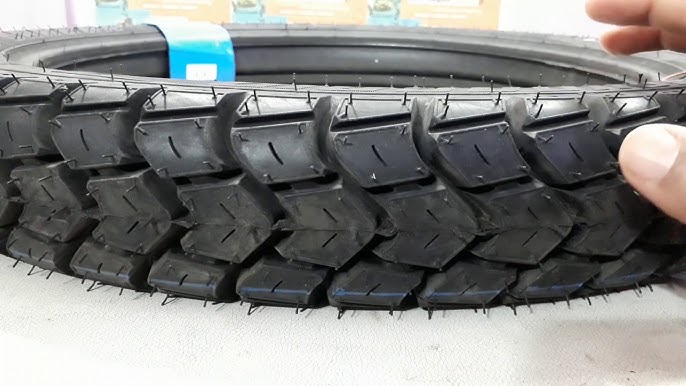Pulsar 150 Front Tyre Price: Before we talk numbers, it’s crucial to understand what kind of tyre your Pulsar 150 typically uses. The Bajaj Pulsar 150, depending on its specific variant (like the Neon, Single Disc, or Twin Disc), generally comes with a front tyre size of 80/100-17 or 90/90-17. The “17” signifies the rim diameter in inches, while the “80/100” or “90/90” denotes the tyre’s width and aspect ratio, respectively. Knowing this size is your first step when shopping for a replacement.
The market offers both tube-type and tubeless tyres for the Pulsar 150. While older models might have come with tube-type tyres, most modern Pulsar 150 variants are equipped with tubeless tyres, and for good reason. Tubeless tyres offer enhanced safety (slower air loss during a puncture), better fuel efficiency (lighter weight), and lower maintenance in the long run.
The Price Spectrum: What to Expect
The price of a Pulsar 150 front tyre in India can vary significantly, typically ranging from ₹1,200 to ₹3,500 or even more, depending on several factors. This range isn’t arbitrary; it reflects a combination of brand reputation, tyre type (tube vs. tubeless), tread pattern, and the technology incorporated into the rubber compound.
Let’s look at some popular brands and their approximate price ranges for the Pulsar 150 front tyre:
- MRF: A household name in India, MRF offers a wide range of tyres. For the Pulsar 150 front, you can expect MRF tyres like the Zapper FS or Masseter-X to fall in the ₹1,400 – ₹2,200 bracket.
- CEAT: Another strong contender in the Indian market, CEAT tyres such as the Zoom or Gripp series are popular choices. Their front tyres for the Pulsar 150 generally range from ₹1,200 – ₹2,000.
- Apollo: Apollo’s Actizip and Actigrip series are well-regarded. You’ll find Apollo front tyres for the Pulsar 150 in the ₹1,400 – ₹2,000 range.
- TVS Eurogrip: Known for offering good value, TVS Eurogrip tyres like the ATT 725 are usually priced competitively, often starting from around ₹1,300 – ₹1,800.
- Michelin/Pirelli: For riders seeking premium performance and uncompromising grip, brands like Michelin (e.g., Pilot Sporty) or Pirelli (e.g., Angel City) offer excellent options. These can be on the higher side, starting from ₹2,500 and going up to ₹4,000+. While these might seem expensive upfront, their enhanced grip, longevity, and superior handling characteristics can justify the investment for enthusiasts.
TVS Bike Tyre Price: Your Ultimate Guide to India’s Best Value Tyres
Important Note on Pricing: These prices are indicative and can fluctuate based on the specific model of the tyre, the retailer, ongoing offers, and the city you are purchasing in. For instance, prices in a metropolitan area like Delhi might slightly differ from those in a smaller town due to varying overheads and transportation costs.
Factors Influencing the Price Tag
So, why such a broad price range? Several factors contribute to the final cost of your Pulsar 150 front tyre:
- Brand Value and Reputation: Established brands like MRF, CEAT, Apollo, and the international players like Michelin and Pirelli, invest heavily in R&D, advanced manufacturing processes, and quality control. This naturally translates to a higher price, but also greater assurance of performance and durability.
- Tyre Type (Tubeless vs. Tube): As a general rule, tubeless tyres are slightly more expensive than their tube-type counterparts due to their more complex construction and the inclusion of an inner liner that seals the air. However, the long-term benefits often outweigh this initial price difference.
- Tread Pattern and Compound: The design of the tread and the rubber compound used significantly impact the tyre’s grip, longevity, and performance in various conditions (wet, dry, off-road). Tyres with specialized tread patterns for better wet grip or softer compounds for enhanced cornering will naturally command a higher price.
- Technology and Innovation: Modern tyres often incorporate advanced technologies for better heat dissipation, puncture resistance, and reduced rolling resistance, all of which add to the manufacturing cost and, consequently, the retail price.
- Warranty and After-Sales Service: Tyres from reputable brands usually come with a warranty, offering peace of mind. This aspect of after-sales support is factored into the price.
- Retailer and Location: Prices can vary between authorized dealers, multi-brand tyre shops, and online platforms. Local taxes and transportation costs also play a role. A small, independent shop in, say, Jaipur, might have slightly different pricing compared to a large distributor in Chennai.
My Personal Take: An Expert’s Insight
Having ridden various motorcycles over the years, including the Pulsar 150, I can tell you that the front tyre is your connection to the road – it dictates how your bike responds to steering inputs and how confidently you brake. I remember once, on my old Pulsar 150, I decided to go for a slightly cheaper, lesser-known brand of front tyre to save a few hundred rupees. It seemed like a smart move at the time.
However, during the monsoon, on a slightly wet stretch of road near my home in Bengaluru, the bike felt noticeably less stable, especially when braking. The grip wasn’t confidence-inspiring, and I could feel the front wheel wanting to lock up even under moderate braking. It was a stark reminder that scrimping on tyres is a false economy. The few hundred rupees I saved then felt insignificant compared to the potential safety risk. I quickly switched to a known brand, and the difference in handling and braking confidence was immediate and reassuring.
Maruti Suzuki Ertiga Tyre Size: The Ultimate Guide You Need
This is where the “value” comes in. It’s not just about the lowest price, but the best value for money, which encompasses safety, performance, and durability.
Choosing the Right Front Tyre for Your Pulsar 150
When selecting a front tyre for your Pulsar 150, consider these points:
- Correct Size: Always stick to the manufacturer’s recommended tyre size (e.g., 80/100-17 or 90/90-17). Deviating from this can negatively impact handling, speedometer accuracy, and safety.
- Riding Style and Conditions:
- Commuter/City Riding: If your primary use is city commuting, a durable tyre with a balanced tread pattern offering good wet and dry grip will suffice. Brands like CEAT, MRF, and TVS Eurogrip have excellent options.
- Highway Riding/Touring: For more highway use, look for tyres that offer good high-speed stability and a longer tread life. Some premium models from Apollo or MRF might be suitable.
- Aggressive Riding/Enthusiast: If you push your bike often or enjoy spirited riding, investing in a tyre with a softer compound and sportier tread from brands like Michelin or Pirelli can offer superior grip and handling, albeit with potentially shorter tread life.
- Tube vs. Tubeless: If your bike supports tubeless tyres (most modern Pulsar 150s do), always opt for them for the safety and convenience benefits.
- Manufacturing Date: Check the DOT code on the sidewall. The last four digits indicate the week and year of manufacture (e.g., “2425” means 24th week of 2025). Avoid tyres that are more than a few years old, even if unused, as rubber degrades over time.
- Reputable Dealer: Always buy from an authorized dealer or a well-known tyre shop. This ensures you get genuine products, proper billing, and warranty support. Plus, they usually have the right equipment for professional fitment and balancing.
Case Study: The Pulsar 150 and the Monsoon Mayhem
Let’s consider a common scenario in India: the monsoon season. A good front tyre can be a lifesaver.
Case Study: Rahul, a daily commuter in Mumbai, owned a 2018 Pulsar 150. He had been using the stock front tyre for a long time, and the tread was visibly worn. During a heavy downpour, while braking hard to avoid a sudden obstacle, his bike skidded, leading to a minor fall. Upon inspection, it was clear the worn tyre lacked the necessary grip on wet roads.
After the incident, Rahul decided to replace his front tyre with a new MRF Masseter-X (90/90-17). While it cost him around ₹1,800, he immediately noticed a significant improvement. The directional tread pattern of the Masseter-X provided excellent water channeling, and the bike felt much more planted and stable, even on waterlogged streets. His braking confidence in wet conditions soared. This small investment not only enhanced his safety but also improved his overall riding experience, proving that the right tyre is an invaluable upgrade.
The Importance of Professional Fitment
Buying the right tyre is only half the battle. Professional fitment is equally important. Ensure the tyre is mounted correctly, balanced properly, and inflated to the recommended pressure. An unbalanced tyre can lead to vibrations, uneven wear, and compromised handling. Most reputable tyre shops in India, from a roadside tyre repair shop in Karol Bagh, Delhi, to a multi-brand outlet in Pune, offer these services.
Conclusion: Investing in Your Ride’s Foundation
The front tyre of your Bajaj Pulsar 150 is much more than just a rubber circle; it’s a critical safety component that directly impacts your riding experience. While the price is certainly a consideration, prioritizing quality, safety, and performance over simply the cheapest option is paramount. Think of it as an investment in your safety and the longevity of your beloved Pulsar. By understanding the factors influencing price, knowing the reputable brands, and choosing wisely, you can ensure your Pulsar 150 always rides confidently and safely on Indian roads.
Frequently Asked Questions (FAQs)
Q1: What is the recommended front tyre size for the Bajaj Pulsar 150? A1: The common front tyre sizes for the Bajaj Pulsar 150 are 80/100-17 or 90/90-17, depending on the specific variant. Always refer to your bike’s owner’s manual for the exact recommended size.
Q2: Are tubeless tyres better than tube tyres for the Pulsar 150?
A2: Yes, generally, tubeless tyres are superior. They offer better safety (slower air loss during punctures), improved fuel efficiency due to lighter weight, and lower long-term maintenance. Most modern Pulsar 150 variants come with tubeless tyres.
Q3: How often should I replace my Pulsar 150’s front tyre?
A3: There’s no fixed timeline, as it depends on usage, riding conditions, and tyre quality. However, it’s crucial to check for tread wear indicators, cracks, bulges, or punctures regularly. If the tread is worn down, or if you notice any damage, it’s time for a replacement, usually every 20,000-30,000 km for the front tyre, but this can vary.
Q4: Can I upgrade to a wider front tyre on my Pulsar 150?
A4: While some riders consider upsizing for a “chunkier” look, it’s generally not recommended without expert consultation. Upsizing can affect handling, speedometer accuracy, and may even cause clearance issues. Stick to the manufacturer’s recommended size for optimal performance and safety.
Q5: What is the average price range for a Pulsar 150 front tyre in India?
A5: The average price for a Pulsar 150 front tyre in India typically ranges from ₹1,200 to ₹3,500, depending on the brand, type (tube/tubeless), and specific model. Premium brands might cost more.
Q6: Does the city where I buy the tyre affect the price?
A6: Yes, prices can vary slightly from city to city due to differences in local taxes, transportation costs, and retailer overheads. It’s always a good idea to check prices from multiple reputable dealers in your area.




